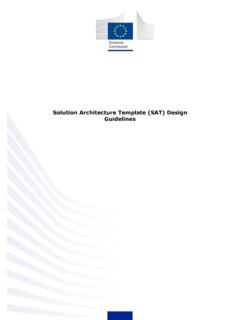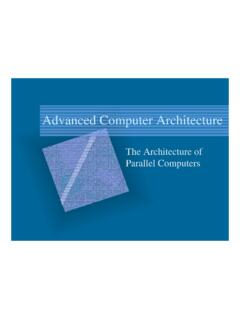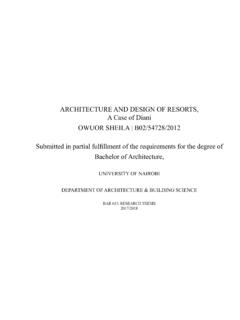Transcription of AN ARCHITECTURE GUIDE to the UN 17 Sustainable …
1 AN ARCHITECTURE GUIDE to the UN 17 Sustainable Development GoalsAN ARCHITECTURE GUIDE to the UN 17 Sustainable Development Goals 5 6101622324452627280869410011011812613614 6154156 CONTENTPREFACE ..INTRO .. THE 17 GOALS 1 No Poverty .. 2 Zero Hunger .. 3 Good Health and Well-Being .. 4 Quality Education .. 5 Gender Equality .. 6 Clean Water and Sanitation .. 7 Affordable and Clean Energy .. 8 Decent Work and Economic Growth .. 9 Industry, Innovation and Infrastructure .. 10 Reduced Inequalities .. 1 1 Sustainable Cities and Communities ..12 Responsible Consumption and Production .. 13 Climate Action ..14 Life below Water .. 15 Life on Land ..16 Peace, Justice and Strong Institutions ..17 Partnerships for the Goals ..ACKNOWLEDGEMENTS ..REFERENCES AND CREDITS .. The Sustainable Development Goals are a call for action by all countries poor, rich and middle-income to promote prosperity while protecting the planet.
2 Architects can provide basic ideas and proposals for regulations that make it possible for us to have sustain-able cities and communities in the future. Architects can facilitate the open dialogue and work in partnerships to give us good solutions and can encourage authorities to make the regulations necessary to move forward. Mogens LykketoftFormer Danish Minister of Finance and of Foreign Affairs, President of the United Nation's General Assembly from September 2015 to September 2016. November, 201898 INTROThe 17 UN Sustainable Development Goals represent the aspiration of the people of the United Nations for a more Sustainable future. The Goals define the challenges we need to address to achieve a better and more Sustainable future for all.
3 They address the global problems we face together, including those related to poverty, inequality, climate, environmental degradation, prosperity, peace and justice. The Goals are deeply interconnected, and to leave no one behind, the world must move significantly towards achieving each Goal by built environment, planning, ARCHITECTURE and design , interact with every goal. And most crucially: not just on an aspirational level or as future potential, but through realized buildings, settle-ments and cities all over the world. Architectural solutions are already there, everywhere, contributing to Sustainable commun-ities and quality of life. However, the built environment is also a part of the current challenges a major consumer of energy and natural resources, and producer of waste. Furthermore, how we build can exacerbate inequalities and affect health.
4 That is why the Institute of ARCHITECTURE and Technology at The Royal Danish Academy of Fine Arts Schools of ARCHITECTURE , design and Conservation, the Danish Association of Architects and the UIA Commission on the UN Sustainable Development Goals have created this ARCHITECTURE GUIDE to the Goals. With this GUIDE book we hope to make it tangible how the built envi-ronment interacts with the goals and to inspire architects and stakeholders involved in the built environment to engage with the challenges. It is for each and every one of us to contribute to the realization of the intention of this book is to provide an ARCHITECTURE GUIDE to the Goals. The 17 chapters present how each Goal is defined by the UN, outlines how it interacts with the built environment and gives examples of realized projects that illustrate architectural of the cases address more than one goal, but the aim here is not to explore Sustainable projects in their full complexity, but to understand the Goals as they relate to ARCHITECTURE .
5 All cases are realized architectural projects, planning initiatives and structures. Our hope is that the cases will form a basis on which to start a conversation about how the built environment can contribute to each this first edition of the GUIDE we have 2-3 cases to illustrate each goal, many from Denmark. In future editions we would like to expand the range of projects, and we welcome suggestions of cases to be included in the second edition, planned for 2020. 10 Cases should be realized projects that illustrate how architects and ARCHITECTURE can contribute to the realization of the Goals. Each case in this GUIDE is inspiring and noteworthy, but they are not the final answer to how the built environment can contribute to the realization of the Goals. There is no one answer to that. To move towards the realization of the Goals, we need many new solutions, adapted to local climate, culture and challenges, and we need them not as ideas, but on the ground, implemented and in use.
6 It is through realized buildings, settlements and planning the effect is achieved; environmentally and on our quality of life. This publication is dedicated to the ARCHITECTURE students who will shape the future of ARCHITECTURE , planning and design ; to the politicians who will aid them by understanding the intersections between ARCHITECTURE and the Goals; and to all citizens, profes-sionals and institutions who join in the collective challenge ahead to address social needs while protecting the behalf of the Editorial Committee Natalie Mossin Chief Editor131 Poverty is more than the lack of income and resources to ensure a Sustainable livelihood. Its manifestations include hunger and malnutrition, limited access to education and other basic ser-vices, social discrimination and exclusion as well as the lack of participation in decision-making.
7 Despite the fact that the global poverty rate has been halved since 2000, intensified efforts are required to boost the incomes, alleviate the suffering and build the resilience of those individuals still living in extreme poverty. To find out more about Goal #1, visit: Extract from UN s Sustainability Goals, available from Extract from UN s SDGs Knowledge Platform, available from POVERTYEnd poverty in all its forms everywhereArchitecture cannot lift people out of poverty, but the built envir-onment can affect the impact of poverty on people's life through access to housing and institutions that are affordable. Through building design and planning architects can develop buildings and settlements that are cheap, safe and healthy. Examples of this can be found in social housing schemes, co-ops and projects for urban upgrading.
8 The overarching principle is that buildings and services must secure the highest possible value from available funds and resources. This demands the development of new architectural solutions. As part of this, buildings must be designed using products and materials that do not compromise the environment, while maintaining the affordability of current, environ-mentally problematic solutions, such as the metal sheet roof. Further-more, ARCHITECTURE , landscape design and planning must adapt the built environment to climatic, geographical and cultural contexts, working with the surrounding environment and not against it, to increase quality of life while helping inhabitants save on electricity and other services. As part of this, architects working on development projects must engage the local communities and help weak and poor citizens gain ownership to the built environment of which they are a part.
9 Finally, the building process itself must take place under conditions that protect the environment as well as poor and marginalized : Sonja WinklerPhoto: Alka HingoraniOrigin/teamAnupama Kundoo with technical support from Ray Meeker, Volontariat NGO, M. Vinayagam Volontariat Home for Homeless Children Challenge Everyone has a right to have a home. Poor people in the world has no or very little money to invest in a home, making it important for architects to design and experiment with typologies and solutions that are decent, affordable and which can be built without the use of expensive tools or materials. ContributionThe Volontariat Home for Homeless Children in Pondicherry, India, can accommodate 15 children and 5 foster parents. It has been designed as an experiment using a rare technology developed by Ray Meeker from Golden Bridge Pottery, which consists of baking a mud house in situ, after constructing it.
10 Keeping the cost low has been a very important element in the design , and the technique makes use of local natural resources, making it possible to spend very little money on purchased materials. The Volontariat Home is basically a mud house built with mud bricks and mud mortar, which is baked three to four days after building, to achieve the strength of the brick. Making the house itself a kiln, is an energy efficient way of baking bricks. Furthermore while baking the house, the heat can be used to produce other mud bricks or ceramic products such as tiles. It was prioritized to up-cycle waste material for the interior and the finish, such as bicycle wheel frames for window frames or bars, glass bottles as structural units in toilet masonry, and glass chai cups to finish the openings at the top of the dome. The project is an example of radical thinking and testing new approaches to cheap housing made with local craftsmanship and Affordable Housing on Dortheavej Challenge Building homes with spatial qualities on a strict budget is a con-straint for all social housing associations operating in Denmark.







